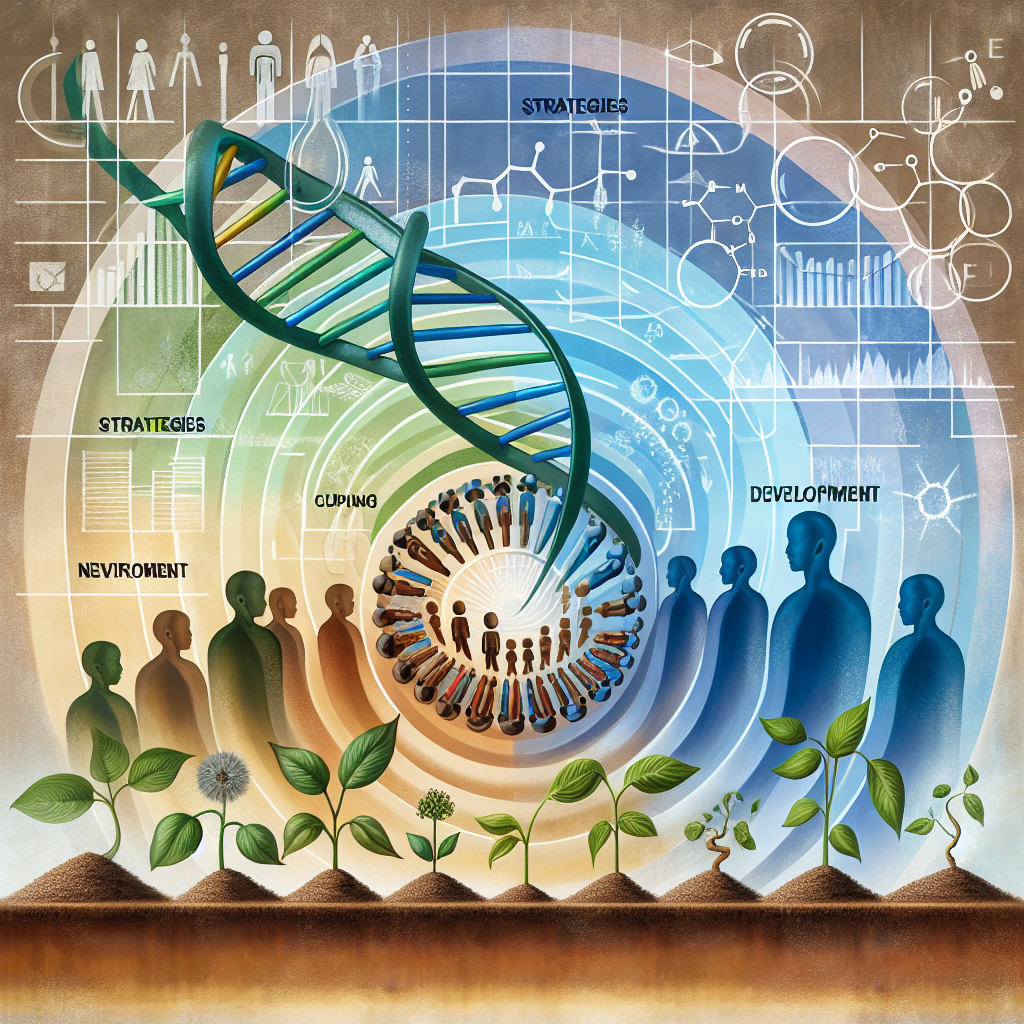The Role of Genetics and Environment in Shaping Human Development
Introduction
Human development is a complex process that is influenced by a combination of genetic and environmental factors. Genetics refers to the inherited traits that are passed down from one generation to the next, while environment refers to the external factors that an individual is exposed to throughout their life. Both genetics and environment play a crucial role in shaping how individuals grow and develop, from infancy to adulthood. In this article, we will explore the role of genetics and environment in human development and how they work together to shape who we are.
Genetics in Human Development
Genetics play a significant role in human development, as they determine many of our physical and psychological traits. Genes are the basic units of heredity that are passed down from parents to their offspring. These genes contain the instructions for building and maintaining our bodies, including our physical appearance, intelligence, temperament, and susceptibility to certain diseases.
Genes come in pairs, with one copy inherited from each parent. Some genes are dominant, meaning that only one copy is needed to express a certain trait, while others are recessive, requiring two copies to be expressed. This is why siblings can have different physical features and characteristics, even though they come from the same parents.
Genetics also play a role in our susceptibility to certain diseases. Some conditions, such as cystic fibrosis or sickle cell anemia, are caused by a single gene mutation, while others, like heart disease or diabetes, are influenced by multiple genes and environmental factors. By studying the genetic makeup of individuals, scientists can better understand how certain traits and diseases are inherited and develop new treatments and prevention strategies.
Environment in Human Development
While genetics provide the blueprint for our development, the environment plays a crucial role in shaping how these genes are expressed. The environment refers to all the external influences that an individual is exposed to, including their family, peers, culture, and physical surroundings. These environmental factors can have a profound impact on how individuals grow and develop, influencing everything from their physical health to their cognitive abilities and emotional well-being.
Prenatal environment: The environment that a fetus is exposed to in the womb can have a lasting impact on their development. Factors such as the mother’s diet, stress levels, and exposure to toxins can affect the baby’s growth and development. For example, pregnant women who smoke or drink alcohol are more likely to have children with developmental delays or behavioral problems.
Early childhood environment: The early years of a child’s life are critical for their development, as this is when many basic skills are learned and important brain connections are formed. Factors such as parental involvement, access to quality education, and exposure to nurturing relationships can have a significant impact on a child’s cognitive and emotional development.
Adolescent and adult environment: As individuals grow older, their environment continues to play a role in shaping their development. Peer relationships, education, employment opportunities, and socioeconomic status can all influence how individuals develop and the choices they make in life. For example, teenagers who are exposed to substance abuse or violence are more likely to engage in risky behaviors themselves.
The Interaction of Genetics and Environment
While genetics and environment play distinct roles in shaping human development, they also interact with each other in complex ways. This interaction is known as gene-environment interplay and refers to how genes and environmental factors work together to influence our development. For example, certain genetic predispositions may increase a person’s vulnerability to certain diseases, but environmental factors can either trigger or mitigate these risks.
One of the most well-known examples of gene-environment interplay is the relationship between genetics and obesity. While some individuals may have a genetic predisposition to obesity, environmental factors such as poor diet and lack of physical activity can exacerbate this risk. By understanding how genes and environment interact, scientists can develop more effective strategies for preventing and treating obesity and other complex diseases.
The field of epigenetics also highlights the interaction between genetics and environment. Epigenetics refers to changes in gene expression that are caused by external factors, such as diet, stress, or exposure to toxins. These changes can be passed down from one generation to the next, influencing how genes are expressed and how traits are inherited. By studying epigenetic mechanisms, scientists can better understand how genetics and environment work together to shape human development.
FAQs
Q: Can genetics determine our behavior and personality?
A: While genetics can influence certain aspects of behavior and personality, they are not the sole determinants. Environmental factors, such as upbringing, cultural influences, and life experiences, also play a significant role in shaping who we are.
Q: How can I improve my child’s development?
A: Providing a nurturing and stimulating environment for your child is essential for their development. This includes engaging in activities that promote physical, cognitive, and emotional growth, such as reading, playing, and spending quality time together.
Q: Is there a way to change our genetic predispositions?
A: While we cannot change our genetic makeup, we can modify our lifestyle and environment to mitigate certain risks. Eating a healthy diet, exercising regularly, and avoiding harmful substances can all help reduce the impact of genetic predispositions on our health.
Q: How do genetics and environment influence mental health?
A: Genetics and environment both play a role in determining an individual’s susceptibility to mental health disorders. While some conditions, such as schizophrenia or bipolar disorder, have a strong genetic component, environmental factors, such as trauma or stress, can also contribute to the development of these disorders.
Conclusion
The role of genetics and environment in shaping human development is a complex and dynamic process. While genetics provide the blueprint for our development, the environment plays a crucial role in determining how these genes are expressed. By understanding how genetics and environment work together, scientists can better understand how traits are inherited, diseases are developed, and individuals grow and develop throughout their lives. By exploring the interaction between genetics and environment, we can gain valuable insights into how to promote healthy development and prevent disease in future generations.




Leave A Comment